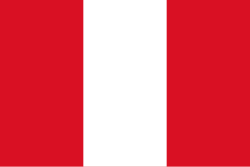Corruption in Peru is a serious concern for the nation. On Transparency International's 2024 Corruption Perceptions Index, Peru scored 31 on a scale from 0 ("highly corrupt") to 100 ("very clean"). When ranked by score, Peru ranked 127th among the 180 countries in the Index, where the country ranked first is perceived to have the most honest public sector. [1] For comparison with regional scores, the best score among the countries of the Americas [Note 1] was 76, the average score was 42 and the worst score was 10. [2] For comparison with worldwide scores, the best score was 90 (ranked 1), the average score was 43, and the worst score was 8 (ranked 180). [3]
Contents
According to the 2021 AmericasBarometer survey of the Latin American Public Opinion Project (LAPOP), 88% of Peruvians believe that half to all politicians in the nation are corrupt, the highest percentage in Latin America according to the study. [4]
